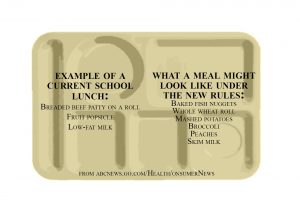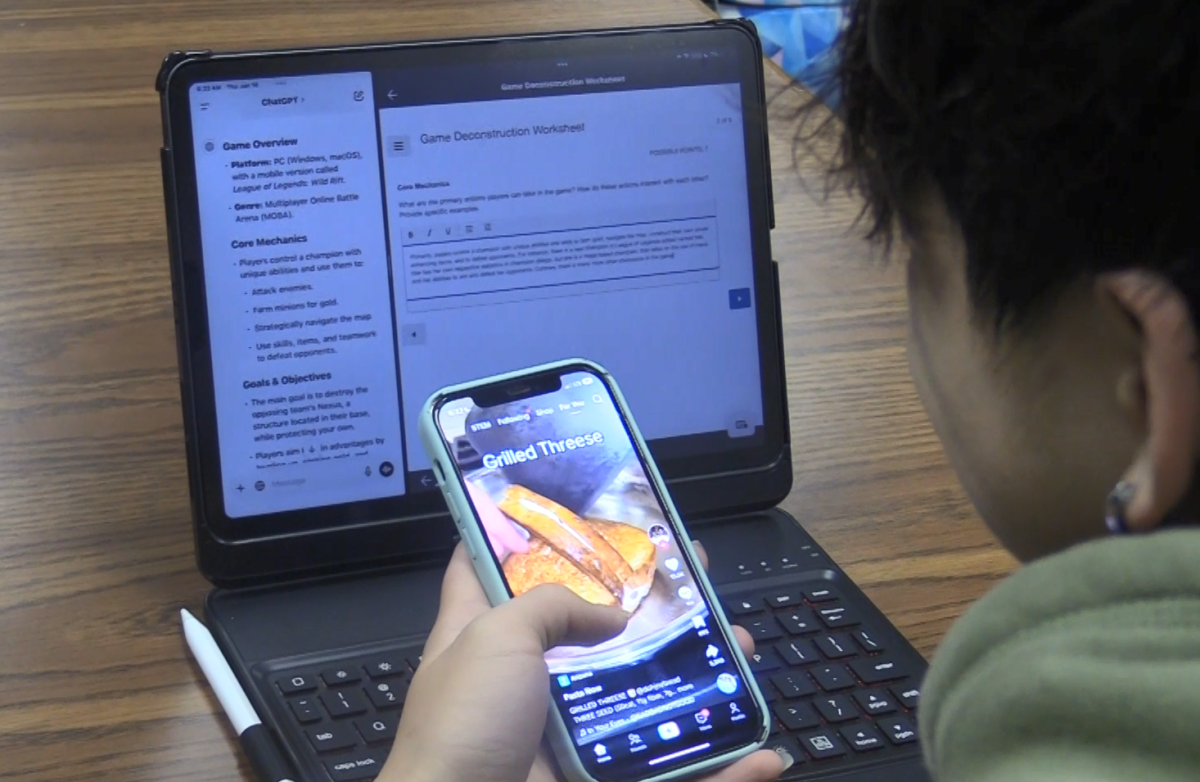 Many issues go on President Barack Obama’s political plate, but many get tossed to the side, unfinished like the leftovers at a fancy feast. But the President and Congress cleaned their plates with the Healthy, Hunger-Free Kids Act, which was signed into law in December after receiving unanimous approval from the Senate.
Many issues go on President Barack Obama’s political plate, but many get tossed to the side, unfinished like the leftovers at a fancy feast. But the President and Congress cleaned their plates with the Healthy, Hunger-Free Kids Act, which was signed into law in December after receiving unanimous approval from the Senate.
Now the US Department of Agriculture is asking the public for input on proposed changes to school lunches. Off the table are chocolate and plain whole milk and foods containing trans fats and high sodium; on the menu are extra helpings of fruits, dark-green and orange vegetables and whole grains.
The full proposal is available online at www.regulations.gov (search for “national school lunch”) and comments can be posted until April 13. The act is intended to reduce obesity in children and update school menu planning for the 21st century; but what might seem appealing to lawmakers’ taste buds might not be for students.
“I don’t think it’s fair that the government is trying to control what we eat,” sophomore Kevin Nguyen said. “Sure, the schools are public and funded by the government but getting rid of chocolate milk from schools and increasing fruits and vegetables is a bit ridiculous.”
However, junior Carlos Cruz believes healthier lunches are exactly what American students need.
“I’m tired of seeing greased up pizzas, burgers, nachos laced with cheese and chill and all the things they serve for lunch,” he said. “It’s time for some fresh fruits and vegetables.”
For fitness teacher Mary Pat Bailey, changes in the nutrition program are a good start.
“There’s a huge obesity problem upon teenagers and middle school students,” she said. “Yet the government cuts health and lessens Physical Education down to one course. It just doesn’t make sense. Changes in the nutrition guidelines are a good start because at least the government is trying to fix this obesity problem, but much more dramatic changes are needed if we really want the problem to reverse itself.”
The act called for changes to be implemented next year. But Sarah Jarrell, the Director of AISD’s Nutrition Department, said Alief will not see changes until after new guidelines are approved.
“At first, we were advised this new regulation would take place for the 2011-12 school year,” Jarrell said. “However, we received a later communication which stated that the start date was now undetermined.”
And even with the adoption of new federal standards, Texas will not be seeing many changes because this state has already made its lunches healthier, Jarrell said.
“The biggest changes will be increased servings in bread and vegetables,” she said. “Several years ago, Texas implemented stricter requirements than those required by USDA.”
No changes will be made until after the comment period ends April 13. Comments can be made directly on the website or be sent by mail to Julie Brewer, Chief, Policy and Program Development Branch, Child Nutrition Division, Food and Nutrition Service, Department of Agriculture, 3101 Park Center Drive, Room 640, Alexandria, Virginia 22302-1594.
Jarrell said it is hard to predict what changes students will see on their lunch tray until after the USDA releases its new rules.
“Until we see the written regulations,” she said, “we can only make conjectures based on communications that we receive.”
OPTIONAL SIDEBAR FACTS:
The Healthy, Hunger-Free Kids Act of 2010:
- Improves nutrition and focuses on reducing childhood obesity
- Gives USDA the authority to set nutritional standards for all foods regularly sold in schools during the school day, including vending machines, the “a la carte” lunch lines, and school stores.
- Provides additional funding to schools that meet updated nutritional standards for federally-subsidized lunches.
- Helps communities establish local farm to school networks, create school gardens, and ensures that more local foods are used in the school setting.
- Builds on USDA work to improve nutritional quality of commodity foods that schools receive from USDA and use in their breakfast and lunch programs.
- Expands access to drinking water in schools, particularly during meal times.
- Sets basic standards for school wellness policies including goals for nutrition promotion and education and physical activity, while still permitting local flexibility to tailor the policies to their particular needs.
- Promotes nutrition and wellness in child care settings through the federally-subsidized Child and Adult Care Food Program.
- Expands support for breastfeeding through the WIC program.
- Increases the number of eligible children enrolled in school meal programs by approximately 115,000 students by using Medicaid data to directly certify children who meet income requirements.
- Helps certify an average additional 4,500 students per year to receive school meals by setting benchmarks for states to improve the certification process.
- Allows more universal meal access for eligible students in high poverty communities by eliminating paper applications and using census data to determine school-wide income eligibility.
- Expands USDA authority to support meals served to at-risk children in afterschool programs.
[Source: www.whitehouse.gov






